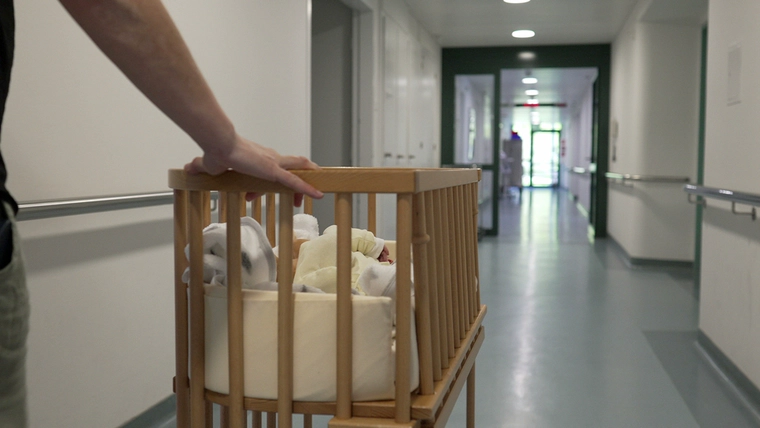New Research Reveals Birth Defects Resulting from Exposure to Fentanyl
Fentanyl exposure in the womb are proving to create serious physical and mental impairments that last a lifetime.

In 2023, a medical study was published that revealed yet another tragic and distressing result of America’s problems with opioid drugs. Researchers in Delaware realized that a cluster of babies exposed to fentanyl in the womb were suffering birth defects that could only be traced back to that drug exposure.1,2
The researchers found at least ten babies had symptoms like these in common:
- Abnormally small heads
- Incompletely formed thumbs
- Cleft palate
- Drooping eyelids
- Incompletely formed joints
- Abnormalities of male genital organs
- Brain structure abnormalities
- Webbed toes
- Short stature
- Misshapen feet
- Developmental delays
The most likely genetic mutations that could have contributed to these defects were ruled out. The research found that each child was exposed to illicit fentanyl prenatally and tested positive for fentanyl at their birth. The mothers in these cases were taking multiple drugs, confusing the issue. But it was fentanyl that was common to each of these ten cases.
This medical condition was termed Fetal Fentanyl Syndrome or FFS.
Twenty More Babies Added to the List
By August 2024, the study had caught the eye of a medical geneticist at Rady Children’s Hospital in San Diego. Dr. Miguel Del Campo at this hospital specializes in children exposed to drugs and alcohol before birth. He identified another 20 tiny patients with the same group of symptoms.3
About his patients, Dr. Del Campo said, “I have some 2-year-olds that are very concerning. They’re just not growing or developing.”
“Medically Complex Children” Resulting from Fentanyl Exposure
A news story from December 2023 documented the extensive medical care needed for one child struggling with Fetal Fentanyl Syndrome. A woman in New Jersey began to foster a two-month-old baby named Sammy who showed these signs. By the time he reached two years of age:2
- His joints were not well-formed.
- He had little hand strength.
- He could not talk but could only make sounds.
- He needed a feeding tube to provide nourishment.
- He needed surgery to correct a heart defect.
- He suffered developmental delays.
- He had gone through extensive therapy and would need much more.
Depending on the severity of the symptoms suffered by other babies with this problem, it’s also possible that they will also require long-term medical care and physical therapy to help them function as normally as possible. The greatest tragedy is that these medical problems are preventable if drug use is avoided.
Other Problems Common to Babies Exposed to Opioids Prenatally

It has long been known that babies born to an opioid-using mother may suffer severe symptoms immediately after birth because the opioid they were being exposed to is suddenly withdrawn. Their symptoms are somewhat similar to withdrawal symptoms suffered by opioid users who abruptly stop drug use, as when they enter rehab or are trying to get sober on their own.
This syndrome is called neonatal abstinence syndrome (NAS). The symptoms of this syndrome can be brutal for the newborn. One of the most distinctive signs is that the baby is inconsolable. It cries endlessly, in a loud and high-pitched shriek. The only comfort for the baby seems to be extensive cuddling. Some hospitals have initiated programs to bring in volunteers to cuddle the babies for long hours.
Other symptoms of NAS include:4
- Excessive sneezing
- Nasal congestion
- Vomiting
- Diarrhea
- Poor feeding
- Irritability
- Tremors
- Seizures
- Fever
- Sweating
It is a miserable beginning for these newborns.
Enduring Symptoms of Prenatal Exposure to Opioids

There are several other problems that don’t necessarily end when the babies are fully withdrawn from the opioids they were exposed to. These signs of injury may last a long time.5
- Developmental delays
- Poor cognitive, social and motor skills
- Behavioral problems in school
- Short-term memory problems
- Hearing and vision problems
- Poorer school performance
- Anxiety
- Aggressive behavior
A 2015 study reported that children exposed to opioids and polysubstance use before their birth had lower IQ scores than other children, and had lower cognitive functioning.6 In fact, these effects increased rather than decreased over time. Some of these children had been removed from their homes and placed in foster homes to eliminate any further exposure to drugs or drug users and they suffered the same declines.
A Comparison to FAS—Fetal Alcohol Syndrome
In 1973, a similar study reported on a group of symptoms that were common to babies exposed to alcohol before birth. It was at this time that the diagnostic term “fetal alcohol syndrome” was coined to describe this problem. Some of the effects of alcohol exposure are similar to those of Fetal Fentanyl Syndrome:7
- Behavioral and cognitive problems
- Intellectual disability
- Learning disabilities
- Low body weight
- Small head size
- Feeding problems
- Abnormal facial features
- Problems with bones
- Heart and kidney problems
- Vision or hearing difficulties
Birth Defects as a Result of Exposure to Several Other Drugs
Medical research has revealed that prenatal exposure to several different drugs can harm the baby, some of which can be permanent. Conclusive research determining the effects of maternal drug use is difficult because few people use just one drug. Multiple drug use, either at the same time or sequentially, is more common. However, some birth defects or other adverse outcomes have been traced back to certain drugs.
Cocaine: Exposure to cocaine can cause abnormalities of the brain, skull, face, eyes, heart, limbs, intestines, genitals, and urinary tract.8
Methamphetamine: The association between methamphetamine use and birth defects of the central nervous system, cardiovascular system and gastrointestinal system has not yet been fully confirmed but looks likely. Oral clefts and limb defects are also possible.9
Marijuana: Birth and baby complications include premature birth, low birth weight, stillbirth, small length and small head size. Another possible complication is the death of the newborn.10
Ecstasy (MDMA): Delays were noted in controlling head movements, eye-hand coordination and being able to sit with support. The drug also seemed to interfere with the chemical process that determines the child’s gender. They were more lethargic than babies not exposed to MDMA.11
The Avoidability of These Health Problems
All of the drug-related problems noted here—every single one of them—are avoidable if women of child-bearing age refrain from drug or alcohol abuse. Understandably, this feat is easier to name than accomplish, especially if the mother-to-be is addicted to one of these substances.
Public awareness of these adverse outcomes is one step toward improving this situation. A family with a woman of childbearing age should be alert to the very long-term problems that can result from the woman’s drug use and find her help as soon as possible if there are signs of drug use or addiction. Young women should be well-educated about the possibilities of these severe developmental and physical problems if drugs or alcohol are used.
Sources:
-
“A novel syndrome associated with prenatal fentanyl exposure.” ScienceDirect, 2023. ScienceDirect ↩︎
-
“New syndrome in newborns exposed to fentanyl possibly found.” NBC News, 2023. NBC News ↩︎ ↩︎
-
“Fentanyl misuse during pregnancy can cause severe birth defects.” NBC News, 2024. NBC News ↩︎
-
“Neonatal Abstinence Syndrome.” National Library of Medicine, 2024. NLM ↩︎
-
“Longitudinal cognitive development of children born to mothers with opioid and polysubstance use.” National Library of Medicine, 2015. NLM ↩︎
-
“One-Year Neurodevelopmental Outcomes After Neonatal Opioid Withdrawal Syndrome: A Prospective Cohort Study.” National Library of Medicine, 2022. NLM ↩︎
-
“About Fetal Alcohol Spectrum Disorder (FASD).” Center for Disease Control and Prevention, undated. CDC ↩︎
-
“Methamphetamine Abuse in Women of Reproductive Age.” The American College of Obstetricians and Gynecologists, 2021. ACOG ↩︎
-
“Marijuana.” LA County Public Health, 2017. LA County Public Health ↩︎
-
“Researchers lead first-ever study on ecstasy’s effects on fetal, infant development.” Case Western Reserve University, 2012. Case Western Reserve University ↩︎







 ®
®